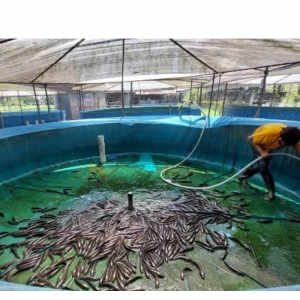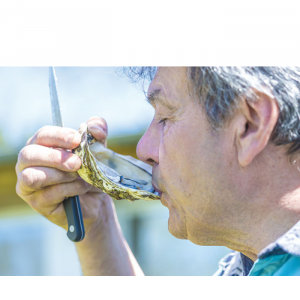
Rabobank: Aquafeed Industry Should Change Strategy to Win Competition, Offset Overcapacity
| Thu, 19 Sep 2019 - 14:45
The aquafeed industry should consider new strategic directions that can "potentially have a much larger impact on their performance financially", Rabobank argued in a new report.
After years of growth, the aquafeed industry is experiencing a deceleration, with increasing overcapacity in nearly all key markets globally, the bank pointed out. Intensifying competitiveness, lower profitability, and slower aquaculture growth than achieved historically also represent challenges for the industry's development, Rabobank's report highlighted.
In recent years, the main strategy deployed by aquafeed players has been to try and produce functional feeds, a way to reverse the commoditization of aquafeed by adding medicinal or other functions to the feed.
For example, in the salmon industry, functional feed can increase salmon resistance to sea lice. In other industries, such as shrimp, feeds able to accelerate growth rates can be marketed as functional feed, although there is no universally accepted definition of what functional feed is exactly.
And it is not always clear to farmers what the additional effect of functional feed has been, due to many conflicting variables. Many refuse to pay the premium price, making this strategy only partially successful for the aquafeed industry, Rabobank said.
The bank argues in its new report that there are four other general strategic directions which aqua feed companies can take, or choose from, even though saying there is nothing wrong in producing feed which is designed with a certain functionality.
Digitalization, data, automation
Emerging technological innovations are often developed by small startup companies or producers in developing countries who struggle to find capital to scale up their production or implement the systems. Aquafeed companies "can be instrumental in accelerating the adoption of technologies, not only through partnerships for joint research and development (R&D), but also through investments into selected innovative companies", Rabobank said. In this way, they could offer new technologies as part of their product.
The combination of feed, data, and aquaculture farming technology can be one of the key drivers of growth and efficiency improvement for the industry, the bank pointed out.
Another area in which feed suppliers might focus on is the adoption of a "multi-platform" strategy, combining animal health and nutrition to combat disease and parasites in aquaculture. strategies.
The combination of feed with one or two other inputs can be a "powerful way to create value for farmers and improve the profitability of input suppliers", according to Rabobank.
However, a key challenge for aquafeed players is the difficulty in finding appropriate acquisition targets specialized in aquatic animal genetics or health products, as both of these sectors are either already consolidated or they are very small local players.

New aquaculture frontiers
A third area of potential growth for feed suppliers is the investment in novel feed ingredients, an area of rapid innovation.
These could be based on algae fermentation technology, producing algae oil as a replacement to fish oil in salmon feed, or on microbial proteins, bacteria grown on various substrates, such as methane gas, to produce a high-quality protein to replace fishmeal and soymeal ingredients in aqua feeds, Rabobank said. Novel proteins and oils are also produced from waste or offal from food and beverage production. These waste streams are used as a feedstock for farming insects, such as the black soldier larvae, which can be processed into high-value feed proteins used in aquafeed.
Combining feed with a range of complementary inputs, such as genetics, animal health products, data analysis solutions, hardware, and farm management software can help to extract previously unobtainable synergies, according to the report.
There are also novel ingredients that can replace antibiotics, such as bacteriophages, which have virtually none of the drawbacks of antibiotics, the bank said. Rabobank noted that, despite the huge potential, only a few direct investments have been done by aquafeed suppliers, with the exception of Cargill.
The fourth direction to for feed companies to drive the "frontiers of aquaculture" is to collaborate in the development of new farming technologies, such as recirculating aquaculture systems (RAS), offshore aquaculture and with new species.
Here too, aquafeed companies can play a role as an investor and technology partner, opening many new avenues for growth in aquaculture, Rabobank said. In many cases, especially since RAS requires specialized feed, this will require the participation of the feed industry, at least as a technical partner.
Rabobank stressed aquafeed players are well-positioned to act as investors in a number of rapidly evolving aquaculture technologies, ranging from novel ingredients to new farming techniques, such as recirculating aquaculture systems or offshore aquaculture.
By partially transforming into aqua-technology suppliers or aqua-venture capitalists, feed companies may be able to enter the higher-growth and higher-profitability segments of the aquaculture inputs industry and drive the growth of the entire aquaculture industry, Rabobank said.
Source : Undercurrent News






















